| Laboratory of the Structural Dynamics, Stability and Folding of Proteins |
Head of the Laboratory
Konstantin Konstantinovich TUROVEROVPh.D., Sci.D., ProfessorTel.: (812) 297-19-57
K.K. Turoverov is a deputy director of the Institute, a member of the Academic Council, professor of Biophysical Department of Peter the Great St. Petersburg
Polytechnic University (second job), Academic Editor of international journals: International Journal of Molecular Sciences, AIMS Biophys, PeerJ.
The laboratory was established in 2005 on the basis of a Group with the same name for studying protein folding processes, establishing the factors determining the occurrence of amorphous aggregates and amyloid fibrils, studying the structure, stability and dynamics of globular proteins in native and denatured partially-folded states, studying disordered proteins and their complexes. Currently, the study is aimed at solving modern problems of functional cell proteomics, including the role of macromolecular crowding in the organization of supramolecular protein-protein and nucleoprotein complexes and non-membrane cell organelles. |
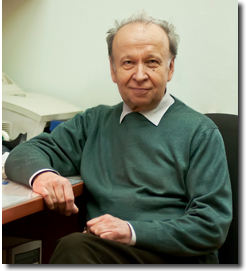
|
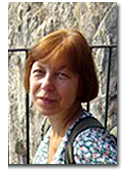
Irina M. Kuznetsova
|
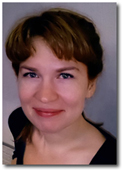
Olesya V. Stepanenko
|
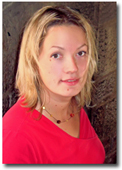
Olga I. Povarova
|

Olga V. Stepanenko
|

Aleksander V. Fonin
PhD |

Anna I. Sulatskaya
PhD |

Sitdikova Asiia
|

Natalia P. Rodina
|

Iuliia. A. Gagarskaia
|
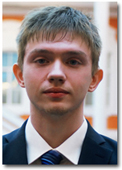
Sergey A. Silonov
|
|
|
Obtained results to the development of the intrinsic UV-fluorescence method: it was shown that analysis of the properties of the microenvironment of individual tryptophan residues allows predicting the fluorescent properties of proteins, recording of the fluorescence polarization can be used as a tool for studying of their dynamic structure. The work was supported by the Russian Foundation for Basic Research. (Publications). On the actin example, the role of intracellular folding machinery in the formation of the native state of proteins was demonstrated. It was found that the so-called inactivated actin, long considered an intermediate state of the protein, is in fact a thermodynamically stable monodisperse associate, whose molecular mass is 14-16 times larger than the mass of the actin macromolecule. The structure of inactivated actin is determined by the amino acid sequence of the protein, while native G-actin, capable to polymerize, is a quasi-stationary, kinetically stable structure resulting from ATP-dependent processes involving chaperones and chaperonins. The work was supported by the Russian Foundation for Basic Research and grants from Program 'Molecular and Cell Biology' of the Presidium of the RAS. (Publications). Amyloid fibrils on the basis of different amyloidogenic proteins were studied using various spectroscopic approaches and the EM method, as well as by studying their interaction with specific fluorescent probes. The spectral and photophysical properties of the benzothiazole dye thioflavin T - a widely used probe for diagnostics of the fibrils formation, were first explained on the basis of the molecular rotor nature of the dye molecule. An experimental confirmation of the existence of thioflavin T excimers in aqueous solutions at a high dye concentration was obtained and a monomeric model of its incorporation into amyloid fibrils was proved. The derivatives and analogues of thioflavin T with improved photophysical properties, which have prospects for use in the study of amyloid fibrils in vivo were synthesized and studied. It is shown that the fluorescent approach, widely used to determine the binding parameters of thioflavin T with amyloid fibrils, has a number of limitations and is often used incorrectly. To solve this problem, two methodical developments were made, one of which is based on the preparation of the dye solutions with fibrils by equilibrium microdialysis, and the other on the correction of the recorded fluorescence intensity of the dye bound to fibrils on the inner filter effect. Determination of the binding parameters of thioflavin T with amyloid fibrils on the basis of various amyloidogenic proteins showed that the application of the developed approach opens new possibilities for using this dye, its analogs and derivatives to study the kinetics of formation and polymorphism of amyloid fibrils. This work was supported by the Russian Foundation for Basic Research, grants from the Program 'Molecular and Cell Biology' of the Presidium of the RAS, scholarships from the President of the Russian Federation, grant from the Dynasty Foundation, and the state contract with the Ministry of Education and Science. (Publications). A study of the physicochemical and spectral properties of GFP-like fluorescent proteins and fluorescent proteins developed on the basis of bacterial phytochromes made it possible to explain a number of properties of these proteins that are essential for their use as biomarkers. It was shown that the quaternary structure of fluorescent proteins is an important but not the only factor determining the differences in their resistance to the denaturing effect of guanidine hydrochloride and heating. The obtained results are essential for understanding the folding processes and factors that stabilize the structure of beta-barrel-type proteins. Data on the interaction of the green fluorescent protein sfGFP with various chemical denaturants (guanidine thiocyanate, guanidine hydrochloride) in pre-denaturational concentrations and salts (NaCl, sodium thiocyanate) were obtained. It was shown the presence of specific sites for negatively charged ions in the surrounding of sfGFP chromophore, the binding of SCN- and Cl- ions to which significantly changes the spectral characteristics of the protein. The spectral properties of dimeric fluorescent markers iRFP713, iRFP682 and iRFP670 and their mutant forms were studied. It is shown that the spectral properties of dimeric near infrared proteins (NIR FPs) are largely determined by the intermonomer and interdomain allosteric influence of cysteine residues, which prevents or facilitates the covalent binding of biliverdin in the second monomer of dimeric NIR FPs. A mutant form of iRFP713 / V256C has been created, which has the highest of all NIR FPs created to date fluorescence quantum yield and fluorescence brightness in vivo and in vitro. The work was supported by the Russian Foundation for Basic Research, scholarships from the President of the Russian Federation and grants from the Program 'Molecular and Cell Biology' of the Presidium of the RAS. (Publications). The study of ligand-binding proteins (odorant-binding proteins, glutamine-binding protein (GlnBP), D-galactose / D-glucose binding protein (GGBP), and trehalose / maltose binding protein (TMBP)) was performed in connection with their possible use as a sensitive elements of biosensor systems. A comparative study of the structure, stability, and conformational changes in the folding-unfolding process of GGBP from E. coli, and TMBP from Thermococcus litoralis, having a similar topology, showed significantly higher stability of TMBP compared to GGBP, which makes it most promising for use as a sensitive element of fluorescent biosensors on glucose. The work was financially supported by grants from INTAS and NATO, state contracts with the Ministry of Education and Science, scholarships from the President of the Russian Federation and grants from the Program 'Molecular and Cell Biology' of the Presidium of the RAS. (Publications). The influence of macromolecular crowding on the structure, stability, folding-unfolding processes, folding failure and aggregation of a large number of proteins that differ significantly in their physico-chemical properties was studied. It is shown that the experimental data can not be explained only within the concept of excluded volume, according to which crowding conditions stimulate structural changes and interactions of target proteins, leading to a decrease in the free volume. When interpreting the results, it is necessary to take into account the influence of crowding agents on the structure of the solvent, as well as the weak interactions between the target protein molecule and macromolecules - crowding agents. The most important feature of macromolecules is, apparently, their ability to separate into phases after reaching a certain critical concentration in the solution. The work was carried out with the financial support of the RSF Grant (project No. 14-24-00131). (Publications). |
|
K.K. Turoverov is a Professor of the Department of Biophysics of Peter the Great St. Petersburg State Polytehnical University. He conducts a course of lectures
and practical classes on spectroscopy of biopolymers for 4th-year students. All the scientific associates of the Laboratory take part in conducting practical exercises.
Young researchers are the heads of bachelor's and master's works of students of Peter the Great St. Petersburg State Polytehnical University and other higher
educational institutions of St. Petersburg. K.K. Turoverov was a scientific supervisor of 12 Ph.D. theses and a scientific consultant of 3 Doctor of Science dissertations.
|
|
Fonin A.V., Golikova A.D., Zvereva I.A., D'Auria S., Staiano M., Uversky V.N, .Kuznetsova I.M,
Turoverov K.K. 2017. Osmolyte-Like Stabilizing Effects of Low GdnHCl Concentrations on d-Glucose/d-Galactose-Binding Protein. Int J Mol Sci. 18(9). pii: E2008.
doi: 10.3390/ijms18092008.
Sulatskaya A.I., Lavysh A.V., Maskevich A.A., Kuznetsova I.M., Turoverov K. K. 2017.
Thioflavin T fluoresces as excimer in highly concentrated aqueous solutions and as monomer being incorporated in amyloid fibrils. Sci Reports, 7(1): 2146.
doi: 10.1038/s41598-017-02237-7.
Ferreira LA, Povarova OI, Stepanenko OV, Sulatskaya AI, Madeira PP, Kuznetsova IM, Turoverov KK,
Uversky VN, Zaslavsky BY. 2017. Effects of low urea concentrations on protein-water interactions. J Biomol Struct Dyn. 35(1): 207-218. doi: 10.1080/07391102.2015.1135823.
Stepanenko Olesya V, Stepanenko Olga V, Kuznetsova I.M., Shcherbakova D.M., Verkhusha V.V.,
Turoverov K.K. 2017. Interaction of Biliverdin Chromophore with Near-Infrared Fluorescent Protein BphP1-FP Engineered from Bacterial Phytochrome. Int. J. Mol. Sci. 18(5):
E1009. doi: 10.3390/ijms18051009.
Lavysh A. V., Maskevich A. A., Lugovskii A. A., Voropay E. S., Sulatskaya A. I., Kuznetsova I. M., Turoverov K. K. Formation of trans-2-[4-(Dimethylamino) Styryl]-3-Ethyl-1,
3-Benzothiazolium Perchlorate Dimers in the Presence of Sodium Polystyrene Sulfonate. 2017. Journal of Applied Spectroscopy. 83(6): 917-923. doi: 10.1007/s10812-017-0384-8.
Rodina N.P., Sulatsky M.I., Sulatskaya A.I., Kuznetsova I.M., Uversky V.N., Turoverov K.K. 2017. Photophysical
properties of fluorescent probe thioflavin T in crowded milieu. Journal of Spectroscopy. Volume 2017, Article ID 2365746, 10 pages. doi: 10.1155/2017/2365746
Fonin A.V., Silonov S.A., Sitdikova A.K., Kuznetsova I.M., Uversky V.N., Turoverov K.K. 2017.
Structure and Conformational Properties of d-Glucose/d-Galactose-Binding Protein in Crowded Milieu. Molecules 22(2), E244. doi: 10.3390/molecules22020244.
Stepanenko OlesyaV., Stepanenko Olga V., Bublikov G.S., Kuznetsova I.M.,
Verkhusha V.V., Turoverov K.K. 2017. Stabilization of structure in near-infrared fluorescent proteins by binding of biliverdin chromophore. Journal of Molecular Structure. 1140:22-31.
doi 10.1016/j.molstruc.2016.10.095.
Sulatskaya A.I., Rodina N.P., Povarova O.I., Kuznetsova I.M., Turoverov K.K.
2017 Different conditions of fibrillogenesis cause polymorphysm of lysozyme amyloid fibrils. Journal of Molecular Structure. 1140:52-58. doi: 10.1016/j.molstruc.2016.10.037.
Gagarskaia Iu., Povarova O. I, Uversky V., Kuznetsova I.M., Turoverov K.K. 2017.
The effects of crowding agents Dextran-70k and PEG-8k on actin structure and unfolding reaction J Mol Struct. 1140: 46-51. doi: 10.1016/j.molstruc.2016.12.029.
Stepanenko Olesya V, Baloban M, Bublikov GS, Shcherbakova DM, Stepanenko Olga V, Turoverov KK,
Kuznetsova IM, Verkhusha VV. 2016. Allosteric effects of chromophore interaction with dimeric near-infrared fluorescent proteins engineered from bacterial phytochromes. Sci Rep.
6:18750. doi: 10.1038/srep18750. https://www.ncbi.nlm.nih.gov/pubmed/26725513
Lavysh A. V., Lugovskii A. A., Voropay E. S., Sulatskaya A. I., Kuznetsova I. M., Turoverov K. K., Maskevich A. A. 2016.
Aggregation of thioflavin T and its new derivative in the presence of anionic polyelectrolyte. Biointerface Research in Applied Chemistry. 6 (5):1525-1530.
Rumyantsev K.A., Turoverov K.K., Verkhusha V.V. 2016 Near-infrared bioluminescent proteins for
two-color multimodal imaging. Sci Reports. 6: 36588 doi: 10.1038/srep36588.
Stepanenko Olga V., Roginskii D.O., Stepanenko Olesya V., Kuznetsova I.M., Uversky V.N., Turoverov K.K.
2016. Structure and stability of recombinant bovine odorant-binding protein: I. Design and analysis of monomeric mutants. PeerJ. 4: e1933. doi: 10.7717/peerj.1933.
Stepanenko Olga V., Roginskii D.O., Stepanenko Olesya V., Kuznetsova I.M., Uversky V.N., Turoverov K.K.
2016. Structure and stability of recombinant bovine odorant-binding protein: II. Unfolding of the monomeric forms. PeerJ. 4: e1574. doi: 10.7717/peerj.1574.
Stepanenko Olga V., Roginskii D.O., Stepanenko Olesya V., Kuznetsova I.M., Uversky V.N., Turoverov K.K.
2016. Structure and stability of recombinant bovine odorant-binding protein: III. Peculiarities of the wild type bOBP unfolding in crowded milieu. PeerJ. 4: e1642. doi: 10.7717/peerj.1642.
Stepanenko Olesya V., Stepanenko Olga V., Kuznetsova I.M., Uversky V.N., Turoverov K.K. 2016.
Peculiarities of the Super-Folder GFP Folding in a Crowded Milieu. Int J Mol Sci. 17(11). pii: E1805. doi: 10.3390/ijms17111805.
Stepanenko O.V., Povarova O.I., Sulatskaya A.I., Ferreira L.A., Zaslavsky B.Y., Kuznetsova I.M., Turoverov K.K.,
Uversky V.N. 2016. Protein unfolding in crowded milieu: What crowding can do to a protein undergoing unfolding? J Biomol Struct Dyn. 34(10): 2155-70. doi: 10.1080/07391102.2015.
1109554.
Kuznetsova I.M., Sulatskaya A.I., Maskevich A.A.; Uversky V.N.; Turoverov K.K. 2016. The high
fluorescence anisotropy of thioflavin T in aqueous solution results from its molecular rotor nature. Analytical Chemistry. 88(1): 718-724. doi: 10.1021/acs.analchem.5b02747.
Sulatskaya A.I., Kuznetsova I.M., Belousov M.V., Bondarev S.A., Zhouravleva G.A., Turoverov K.K. 2016.
Stoichiometry and Affinity of Thioflavin T Binding to Sup35p Amyloid Fibrils. PLoS One. 11(5): e0156314. doi: 10.1371/journal.pone.0156314.
Kuznetsova I.M., Povarova O.I., Uversky V.N. and Turoverov K.K. 2016. Native globular actin has
a thermodynamically unstable quasi-stationary structure with elements of intrinsic disorder. FEBS J. 283(3) 438-45. doi: 10.1111/febs.13548.
Stepanenko Olga V., Fonin A.V., Stepanenko Olesya V., Staiano M., D'Auria S., Kuznetsova I.M.,
Turoverov K.K. 2015. Tryptophan residue of the D-galactose/D-glucose-binding protein from E. Coli localized in its active center does not contribute to the change in intrinsic
fluorescence upon glucose binding. J. Fluorescence 25(1):87-94. doi: 10.1007/s10895-014-1483-z.
Uversky V.N., Kuznetsova I.M., Turoverov K.K., Zaslavsky B. 2015. Intrinsically disordered proteins as
crucial constituents of cellular aqueous two phase systems and coacervates. FEBS Lett., 589(1):15-22. doi: 10.1016/j.febslet.2014.11.028.
Kuznetsova I.M., Zaslavsky B.Y., Breydo L.,Turoverov K.K., Uversky V.N. 2015. Beyond the
excluded volume effects: mechanistic complexity of the crowded milieu. Molecules. 20(1):1377-409. doi: 10.3390/molecules20011377.
Rumyantsev K.A., Shcherbakova D.M., Zakharova N.I., Emelyanov A.V., Turoverov K.K. and
Verkhusha V.V. 2015 Minimal domain of bacterial phytochrome required for chromophore binding and fluorescence. Scientific Reports. 18(5):18348. doi: 10.1038/srep18348.
Fonin A.V., Kuznetsova I.M., Turoverov K.K. 2015. Spectral properties of
BADAN in solutions with different polarities. J. Mol. Struct. 1090: 107-111. doi: 10.1016/j.molstruc.2015.01.038.
Maskevich A.A., Lavysh A.V., Kuznetsova I.M., Sulatskaya A.I., Turoverov K.K. 2015. Spectral Manifestations of Thioflavin T Aggregation. Journal of Applied Spectroscopy. 82 (1): 33-39.
doi: 10.1007/s10812-015-0060-9.
Fonin A.V., Povarova O.I., Staiano M., D'Auria S., Turoverov K.K., Kuznetsova I.M.
2014. Trehalose/maltose-binding protein as a sensitive element of glucose biosensor. Optical Materials 36(10): 1676 - 1679. 10.1016/j.optmat.2014.01.001.
Fonin A.V., Sulatskaya A.I., Kuznetsova I.M., Turoverov K.K. 2014. Fluorescence of dyes in solutions
with high absorbance. Inner filter effect correction. Plos One. 9(7): å103878. doi: 10.1371/journal.pone.0103878.
Stepanenko Olga V., Stepanenko Olesya V., Staiano M., Kuznetsova I.M., Turoverov K.K., D'Auria S.
2014. The Quaternary Structure of the Recombinant Bovine Odorant-Binding Protein is Modulated by Chemical Denaturants. PlosOne. 9(1): e85169. doi: 10.1371/journal.pone.0085169.
Ostroumova O.S., Chulkov E.G., Stepanenko O.V., Schagina L.V. 2014. Effect of flavonoids on the
phase separation in GIANT unilamellar vesicles formed from binary lipid mixtures. Chem Phys Lipids. 178:77-83. doi: 10.1016/j.chemphyslip.2013.12.005.
Stepanenko Olesya V., Bublikov G.S., Stepanenko Olga V., Shcherbakova D.M., Verkhusha V.V.,
Turoverov K.K., Kuznetsova I.M. 2014. A knot in the protein structure - probing the near-infrared fluorescent protein iRFP designed from a bacterial phytochrome. FEBS J. 281.
2284-2298. doi: 10.1111/febs.12781.
Stepanenko Olesya V., Stepanenko Olga V., Kuznetsova I.M., Verkhusha V.V., Turoverov K.K. 2014.
Sensitivity of Superfolder GFP to Ionic Agents. PlosOne 9(10): e110750. doi: 10.1371/journal.pone.0110750.
Fonin A.V., Stepanenko O.V., Povarova O.I., Volova C.A., Philippova E.M., Bublikov G.S., Kuznetsova I.M.,
Demchenko A.P., Turoverov K.K. 2014. Spectral characteristics of the mutant form GGBP/H152C of D-glucose/D-galactose-binding protein labeled with fluorescent dye BADAN:
influence of external factors. PeerJ. 2: e275. doi: 10.7717/peerj.275.
Lavysh A.V., Sulatskaya A.I., Lugovskii A.A., Voropay E. S., Kuznetsova I.M., Turoverov K.K., Maskevich A.A. 2014. Photophysical properties of trans-2-[4-(dimethylamino)styryl]-3-ethyl-1,
3-benzothiazolium perchlorate, a new structural analog of thioflavin T. J. Appl. Spectr. 81(2): 205-213. doi: 10.1007/s10812-014-9911-z.
Povarova O.I., Uversky V.N., I.M. Kuznetsova I.M., Turoverov K.K. 2014. Actinous enigma or enigmatic
actin. Folding, structure, and functions of the most abundant eukaryotic protein. Intrinsically Disordered Proteins. 2(1): e34500. doi: 10.4161/idp.34500.
Kuznetsova I.M., Turoverov K.K., Uversky V.N. 2014. What macromolecular crowding can do to a
protein? Int. J. Mol. Sci. 15: 23090-23140; doi:10.3390/ijms151223090.
Stepanenko Olesya V., Stepanenko Olga V., Kuznetsova I.M., Verkhusha V.V., Turoverov K.K. 2013.
The beta-barrel scaffold of fluorescent proteins: folding, stability and role in chromophore formation. International review of cell & molecular biology. Int Rev Cell Mol Biol.302:221-78.
doi: 10.1016/B978-0-12-407699-0.00004-2.
Kuznetsova Irina M., Sulatskaya Anna I., Povarova Olga I., Turoverov Konstantin K. 2012. Reevaluation
of ANS binding to Human and Bovine Serum Albumins. Key Role of Equilibrium Microdialysis in Ligand - Receptor Binding Characterization. Plos One. 7(7): e40845. doi:
10.1371/journal.pone.0040845.
Kuznetsova I.M., Sulatskaya A. I., Uversky V.N., Turoverov K.K. 2012. A new trend in the experimental
methodology for the analysis of the Thioflavin T binding to amyloid fibrils. Molecular Neurobiology. 45: 488-498. doi: 10.1007/s12035-012-8272-y.
Sulatskaya A.I., Kuznetsova I.M., Turoverov K.K. 2012. Interaction of thioflavin T with amyloid fibrils:
fluorescence quantum yield of bound dye. The Journal of physical chemistry B. 116(8): 2538-2544. doi: 10.1021/jp2083055.
Kuznetsova I.M., Sulatskaya A.I., Uversky V.N., Turoverov K.K. 2012. Analyzing Thioflavin T binding
to amyloid fibrils by an equilibrium microdialysis-based technique. Plos One. 7(2): e30724. doi: 10.1371/journal.pone.0030724.
Sulatskaya A.I., Povarova O.I., Kuznetsova I.M., Uversky V.N., Turoverov K.K. 2012. Binding stoichiometry
and affinity of fluorescent dyes to proteins in different structural states. Methods Mol Biol. 891: 441-60. doi: 10.1007/978-1-61779-927-3_26.
Stepanenko Olesya V., Stepanenko Olga V., Kuznetsova I.M., Shcherbakova D.M., Verkhusha V.V.,
Turoverov K.K. 2012. Distinct effects of guanidine thiocyanate on the structure of superfolder GFP. PlosOne 7(11): e48809. doi: 10.1371/journal.pone.0048809. https://www.ncbi.nlm.nih.gov/pubmed/23144981
|
|
Program of the Presidium of the Russian Academy of Sciences "Molecular and cellular biology" (headed by K.K. Turoverov), grant RFFI-Bel 16-54-00230 (headed by K.K. Turoverov), RFBR grant 16-04-01614 (headed by A.I. Sulatskaya), RFBR grant 16-04-01515 (headed by Olesya V. Stepanenko), grant RFFI-India 17-54-45169 (headed by I.M. Kuznetsova), scholarship from the President of the Russian Federation SP 1982-2015.4 (A.I. Sulatskaya), scholarship from the President of the Russian Federation SP 1725.2015.4 (A.V. Fonin). |
|
|
| Structure | Home | |